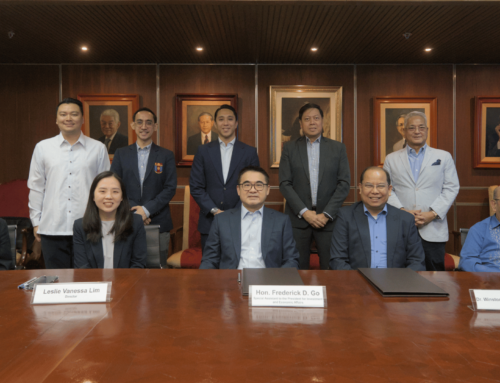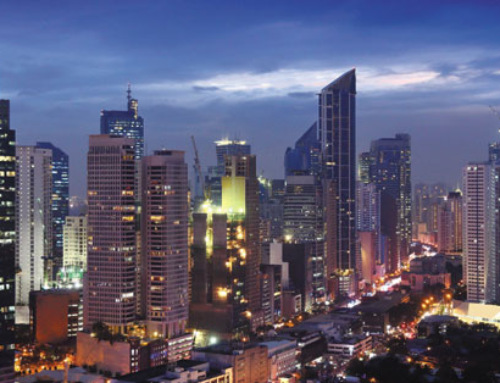CRC in the Energy Sector — If there’s any industry where it’s clear just how important competition is for consumers’ wallets, it’s the oil products industry. So when the Philippine Competition Commission (PCC) wanted to take a closer look at the inner workings of the “downstream petroleum industry,” a team of consultants from CRC, headed by Dr. Peter Lee U, was glad to help by taking on the task of doing a Market Study on the Refined Petroleum Industry, which the PCC released to the public earlier this year as one of their “PCC Issues Papers.”

CRC consultants recently conducted a market study on the Philippines’ refined petroleum industry for the Philippine Competition Commission
These papers, says the PCC, “aim to examine the structure, conduct, and performance of select industries to better inform and guide PCC’s advocacy and enforcement initiatives.” For this paper, that means the country’s downstream petroleum industry, which the Downstream Oil Deregulation Act of 1998 (Republic Act No. 8479) defines as the industry involved in “importing, exporting, re-exporting, shipping, transporting, processing, refining, storing, distributing, marketing, and selling of crude oil, gasoline, liquefied petroleum gas (LPG), kerosene, and other petroleum products.”
In coming up with ideas for how to enhance competition between the various players in the oil industry, the team examined demand and supply structures, including pricing, costs, market preferences, and potential competition issues.
Some of their recommendations, both big and small, are summarized in the paragraphs below:
- Encouraging the Department of Energy to rethink the timing of price adjustments
One of the findings of the research team’s analysis was that the current system in which oil retailers change their prices every Tuesday, determining the size of their price changes based on the change in the previous two weeks’ Mean of Platts Singapore (MOPS), a global standard for the valuation of petroleum products. But since the movement of MOPS is the same for all, this means that everybody can predict what their competitor’s average price will be. Retailers thus have no incentive to price differently from the average, even if they actually bought their products at a lower price than the average. The research team suggested that pump prices could be priced more competitively if the PCC could convince the Department of Energy to ‘unsynchronize’ the weekly price adjustments of the companies, reducing the tendency of players to just go with the price adjustment of the majority for any given week.
- Making sure local dealers can price independently
Another thing the research team discovered is that although local franchise holders of the various oil retailers are not formally held back from setting their own prices, they often feel obligated to coordinate with their oil company before they adjust their prices. The research team suggested that the price of oil would benefit from more competition if the PCC could take steps to make sure local dealers feel free to develop their own pricing strategies.
- The need for a pump price app
One solution to the needs identified by the research team is actually on its way: the DOE is already working an app that would help users determine the prices at all the local gas stations near them. The researchers note that an app like this “would not only help consumers get the lowest price, but also help the dealer find out who sells at a lower price.” Thus, they add, “The application may enable pump prices to converge faster.”
- Encouraging (and regulating) discounts and promotions
Among the various competition techniques players currently use, the research team identified one which they think is good for promoting competition – the oil companies’ practice of offering different discounts and promotions, such as loyalty cards, to their regular customers. Doing this, the research team noted, allows the industry players to compete “along a different dimension other than price.” The research team’s only caveat was to suggest the closer monitoring of these promotions, so that consumer protection can be maximised.
- Rethinking Policies about Biofuel procurement
Another major recommendation for the team was to rethink the policies which affect how oil companies purchase biodiesel and bioethanol. The Biofuels Act of 2006 (RA 9367) requires oil companies to blend bioethanol and biodiesel, and also requires them to purchase all biofuels from domestic producers whenever possible. They are only allowed to import when domestic supply is insufficient. This means that local biofuel producers have an inordinate ability to set the prices for a major production input, ultimately affecting prices for the end-consumer. The researchers suggested that the PCC could bring the relevant government agencies together to discuss the possibility of “a more liberal biofuel procurement policy.” Letting imported biofuels into the country doesn’t just help lower prices, they point out. It could also be a good source of revenue for the government.
- Encouraging even more players
The researchers noted that the Downstream Oil Deregulation Act of 1998 did in fact encourage competition. But they noted that there was still room in the market for more players, and suggested that the DOE could make efforts to increase potential new players’ awareness of investment incentives, especially companies which could invest in raising storage capacity in remote markets. The research team also noted that new players could be encouraged to enter the market if government bureaucracies, which can often be obstacles to expansion or to the development of new businesses, could be streamlined.
Aside from these recommendations, the study also identified a number of provinces or cities where oil prices behave in unusual ways.
In Baguio City, for example, fuel prices are significantly higher than in immediately adjacent lowland areas such as La Union – despite only a small transportation cost for bringing gas up to the summer capital. Stakeholders interviewed by the stakeholders theorized that this might be caused by several factors, including: the smaller fuel market of Baguio and of the Cordillera Administrative Region, which means fewer retail stations and a lack of storage facilities; the higher cost of business operations in Baguio; and less price-sensitive fuel demand in Baguio. Other stakeholders even suggested that oil smuggling in the lowland areas as a possible explanation for the difference.
Meanwhile, statistics from the Bicol Region showed that it had a large number of retail outlets, but is unique among the country’s regions because the market is becoming increasingly concentrated around the major players. The researchers and the stakeholders they interviewed believe that this means the major players may have managed to dominate the bulk and the wholesale market in the region. They theorized in turn that this may be because of a lack of storage capacity among the non-major dealers. The researchers brought the matter up with DOE, and learned that they were aware of the anomaly too, but that the DOE had not yet concluded its study on the mystery of high oil product market concentration in Bicol.
The Market Study on the Refined Petroleum Industry, prepared by the CRC team consisting of by Dr. Peter Lee U, Dr. Romeo Balanquit, Gilbert Garchitorena, Allan Francisco Jesalva, and Perry Fernand Reyes, can be accessed on the Philippine Competition Commission website here. • | RE de Leon | CRC||






